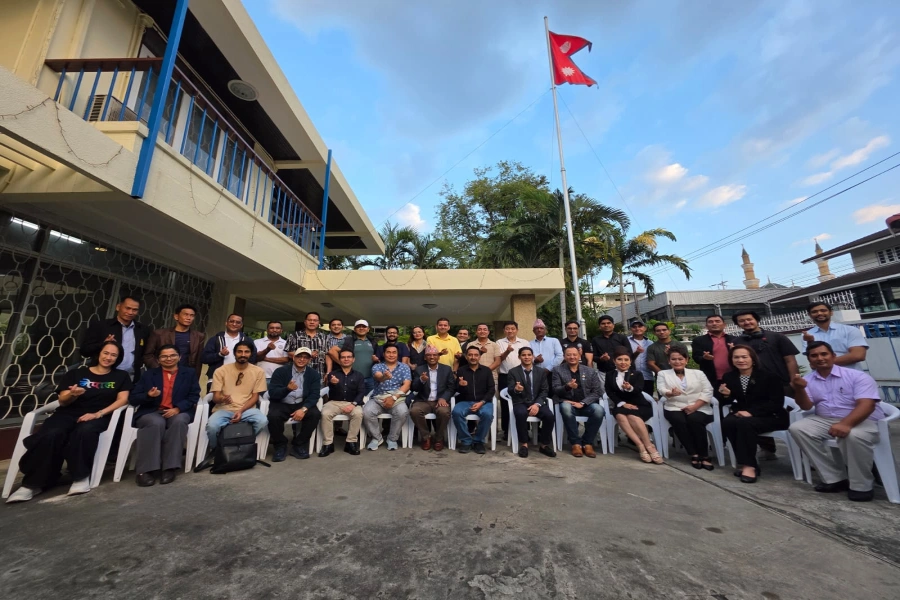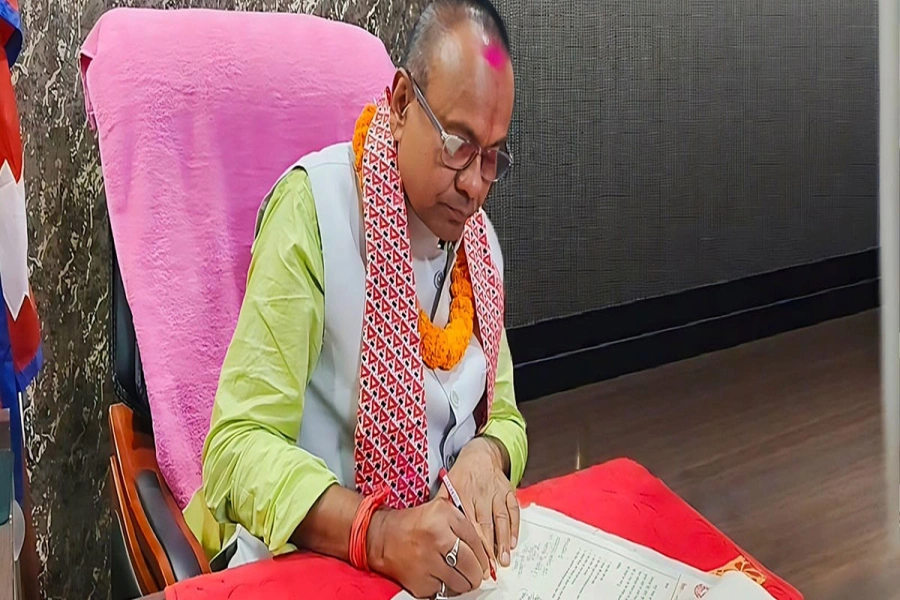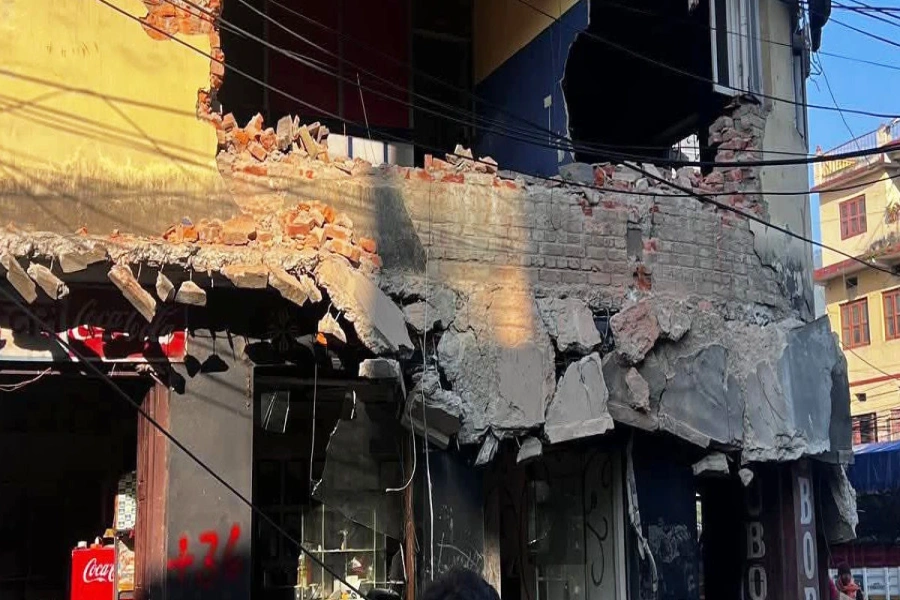With the monsoon each year in South Asia comes the danger of floods. Communities in the Himalayan foothills brace for impact, with floods wiping away infrastructure, causing landslides, and resulting in loss of lives and livelihoods. These floods overwhelm vast swaths of land, displacing people from their homes, destroying granaries and crops and washing away cultivated land. Even before the start of the monsoon this year, Cyclone Amphan struck eastern India and Bangladesh on May 20, killing more than 100 people and causing widespread damage and dislocation. The 2017 floods are also still fresh in public memory – around 1,200 people died and over 40 million were affected in Bangladesh, India, and Nepal. In Nepal, the floods left a trail of destruction, killing more than 160 people, affecting over 1.7 million, and causing damage estimated at NPR 7.2 billion to the agriculture sector. These dangers still loom large.
In recent years, climate change has exacerbated the unpredictability and intensity of rainfall events, increasing the risk of landslides and floods. The South Asia Climate Outlook Forum established in 2010 with members from Afghanistan, Bangladesh, Bhutan, India, Maldives, Myanmar, Nepal, Pakistan and Sri Lanka predicted that large parts of South Asia, including Nepal, will likely experience normal monsoon rainfall this year. Monsoon rainfall is considered to be normal when the total amount of rainfall in the country between June and September is within 10 per cent (plus or minus) of the average rain over 30 years or more. However, the possibility of floods cannot be ruled out even in a normal year as the amount of rainfall could vary with location and time. For example, in recent years, although the total amount of annual rainfall in a particular area may remain the same there could be too much at a time and too little at other times.
Over the last decade, a number of early warning systems have been installed in flood-prone areas in Nepal such as the Ratu, Riyu, and Kankai watersheds. Advances in technology and the proliferation of various communication media like radio, television, cellular networks, social media, and print media have made dissemination of early warning much easier today than in the past. However, as was evident from the 2017 floods, flood response mechanisms still face challenges primarily on two fronts: i) communicating location-specific early flood warnings (forecasts, outlooks, inundation maps) from authoritative sources to the flood-vulnerable communities; and ii) enhancing the capacity of sources and the understanding of vulnerable communities regarding timely disaster preparedness and response. Further, haphazard urbanization and degradation of the environment, including blockage of natural drainage, have compounded vulnerabilities and increased the risk of flooding and landslides.
This year, monsoon preparedness activities in Nepal need to factor in the impacts of the COVID-19 pandemic as well. With the approaching rainy season and the increasing number of confirmed COVID-19 cases across the low-lying, flood-prone Terai districts such as Mahottari, Dhanusha, Rautahat and Parsa of Province # 2 a double disaster is a real possibility, and the government must protect the most vulnerable from the impacts of both.
Dramatic rise in COVID-19 related deaths in Sudur Paschim; 23 d...

How prepared are we?
Timely flood preparedness is key to saving lives and property during flood disasters. The flood forecasting section of the Department of Hydrology and Meteorology provides flood advisories with information on rainfall estimates, weather forecasts, and updates on the situation of major rivers. These advisories are provided through special bulletins and the 24/7 Flood Advisory Service, initiated in 2016. A special bulletin was issued by the department regarding the Amphan Cyclone that warned of the likelihood of flash floods in smaller streams and rivers in eastern Nepal due to the cyclone.
In the past, most disaster management efforts were limited to response and relief. However, in recent years, we have been witnessing a paradigm shift towards preparedness. In the new federal governance structure, Nepal has strengthened its disaster management systems at all levels: federal, provincial, and local. The National Disaster Management Authority was established in 2019 to conduct national disaster simulations, improve disaster response technologies, and put in place better risk governance through improved interactions among key ministries. The Disaster Risk Reduction and Management Act (2017) has empowered local authorities to carry out disaster risk reduction at the local level. The limited capacity and resources of the local authorities, however, will remain a challenge in dealing with the unfolding COVID-19 pandemic and impending floods. At present, government agencies across Nepal are already stretched thin trying to manage the COVID-19 response. If the scale of the monsoon flooding this year is similar to 2017, then disaster management capacities across the country risk being overwhelmed.
What can be improved?
To minimize the adverse impacts of floods, the availability and access to early warning systems and timely disaster related information and risk assessments need to be increased. Early warning information must alert vulnerable communities to possible flood occurrence and communicate information on areas likely to be inundated and exposed in a language that they easily understand. Government action needs to shift towards impact-based forecasting, mapping hydrometeorological impacts along with COVID-19 hotspots for better risk management. Province #2 for instance is a COVID-19 hotspot and also prone to floods.
The Government of Nepal must now continue with its flood preparedness efforts and adopt a multi-hazard approach while ensuring COVID-19 containment. Past experiences have shown that shortcomings in effective disaster risk communication hinder early response on the ground. Proper risk communication protocols need to be developed to avoid misinformation and provide clear instructions for protective action. Youth networks, grassroots and media mobilization can help disseminate reliable and timely information to vulnerable communities regarding the dual threat. Strategies need to consider pandemic-related mobility restrictions and social distancing requirements for safe evacuations and sheltering during floods. Community-led awareness and preparation, infrastructure provisions, and response mechanisms need to be prioritized along with effective monitoring and management of evacuation shelters. Access to clean drinking water and sanitation facilities are a challenge during flood disasters, and even more now given the additional challenge of this pandemic.
The UN has warned that the country could be faced with two emergencies at the same time and urged the government and the humanitarian community to be prepared for this very real possibility. A single agency cannot manage such compounded risks; it needs to be a government-led endeavour in partnership with civil society, private sector, academia and I/NGOs, and transboundary collaboration. A preparedness plan that encompasses common risks and provides the largest, intersecting security net for the vulnerable with robust risk communication is key to safely navigate this possible dual threat.
Shrestha is program coordinator and water resources specialist at the International Centre for Integrated Mountain Development (ICIMOD)









_20200814192758.jpg)






























